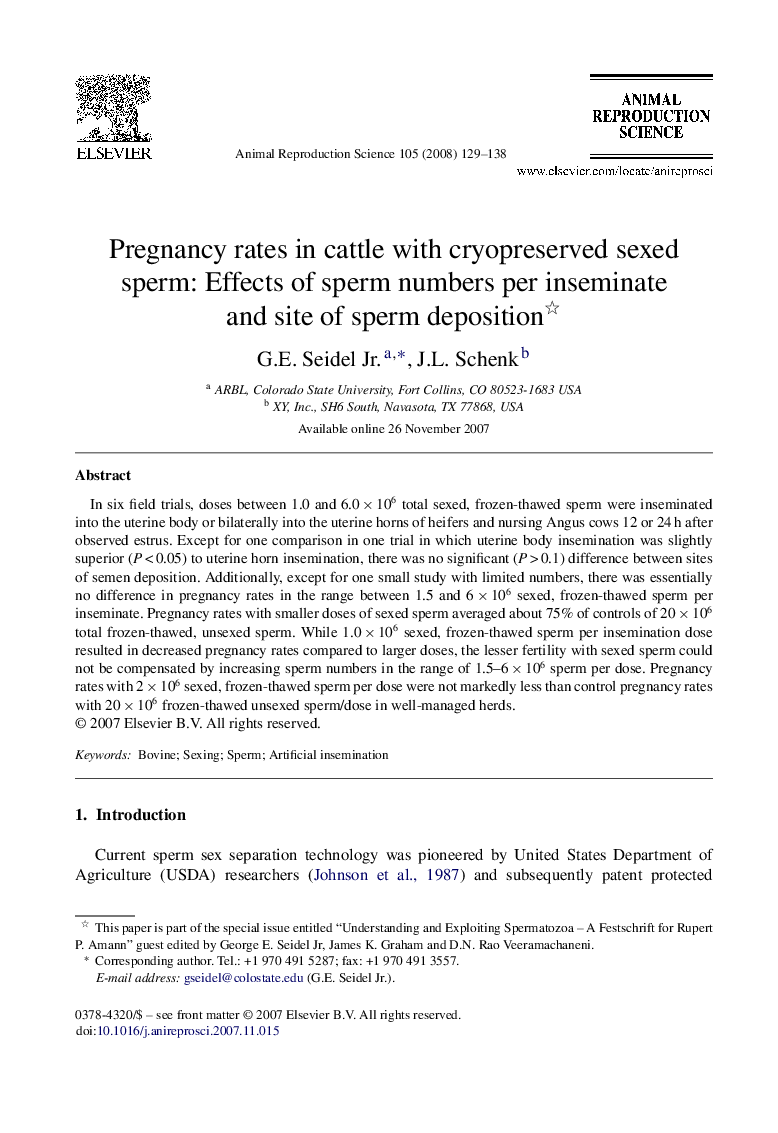| Article ID | Journal | Published Year | Pages | File Type |
|---|---|---|---|---|
| 2074564 | Animal Reproduction Science | 2008 | 10 Pages |
In six field trials, doses between 1.0 and 6.0 × 106 total sexed, frozen-thawed sperm were inseminated into the uterine body or bilaterally into the uterine horns of heifers and nursing Angus cows 12 or 24 h after observed estrus. Except for one comparison in one trial in which uterine body insemination was slightly superior (P < 0.05) to uterine horn insemination, there was no significant (P > 0.1) difference between sites of semen deposition. Additionally, except for one small study with limited numbers, there was essentially no difference in pregnancy rates in the range between 1.5 and 6 × 106 sexed, frozen-thawed sperm per inseminate. Pregnancy rates with smaller doses of sexed sperm averaged about 75% of controls of 20 × 106 total frozen-thawed, unsexed sperm. While 1.0 × 106 sexed, frozen-thawed sperm per insemination dose resulted in decreased pregnancy rates compared to larger doses, the lesser fertility with sexed sperm could not be compensated by increasing sperm numbers in the range of 1.5–6 × 106 sperm per dose. Pregnancy rates with 2 × 106 sexed, frozen-thawed sperm per dose were not markedly less than control pregnancy rates with 20 × 106 frozen-thawed unsexed sperm/dose in well-managed herds.
